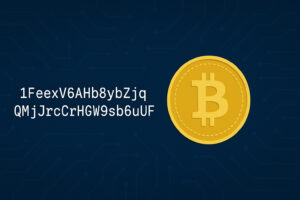Introduction

Unmoved address holds stolen funds from 2011 Mt. Gox incident.
1FeexV6bAHb8ybZjqQMjJrcCrHGW9sb6uF is a Bitcoin address that has gained significant attention in the cryptocurrency community due to its connection with the 2011 Mt. Gox hack. Holding nearly 80,000 BTC, it ranks among the largest known Bitcoin wallets by balance. Despite its size and notoriety, the address has remained dormant since the funds were first deposited. It continues to be a focal point for discussions about crypto theft, digital forensics, and unresolved legal claims. The difficulty in locating the private key for the 1Feex address highlights the urgency to find solutions for recovering access to such significant amounts of cryptocurrency.
Background: Origins of the Address
The address 1FeexV6bAHb8ybZjqQMjJrcCrHGW9sb6uF became prominent after Mt. Gox, once the world’s largest Bitcoin exchange, was hacked in March 2011. At that time, approximately 80,000 BTC were stolen from the platform. Blockchain analysis later revealed that a single large transaction transferred most of those funds to this address.
Unlike many stolen crypto assets that are quickly split or laundered, the Bitcoin sent to this address has never been moved since the original deposit. That anomaly has made it a prime subject for blockchain researchers, law enforcement, and crypto enthusiasts attempting to trace ownership and recover the lost funds.
The process of tracing ownership involves several steps, including blockchain analysis, identifying transaction patterns, and collaborating with law enforcement to attempt to recover the lost funds.
Address Details, Wallet, and Technical Format
The address follows the P2PKH (Pay-to-PubKey-Hash) format, which was the standard for Bitcoin addresses at the time of the Mt. Gox incident. It starts with the digit ‘1’, indicating it was generated using legacy Bitcoin address standards.
The full address is:
1FeexV6bAHb8ybZjqQMjJrcCrHGW9sb6uF
Key details:
- Balance: Approximately 79,957 BTC
- Estimated value: Varies with market price, but worth billions in USD
- First transaction: March 2011
- Number of outgoing transactions: Zero
This address is often cited in blockchain analysis tools and public blacklists as associated with suspicious or stolen funds.
Connection to Mt. Gox Hack
Mt. Gox was based in Tokyo and handled over 70% of all Bitcoin transactions worldwide in its prime. In March 2011, a vulnerability in the system allowed attackers to siphon funds from users’ wallets. While the exact methods remain disputed, it is widely accepted that a portion of the missing Bitcoin – around 80,000 BTC – was directed to 1FeexV6bAHb8ybZjqQMjJrcCrHGW9sb6uF.
Public blockchain data confirms this flow. The theft was not discovered immediately. It was only after a deeper audit in 2014 that the full scale of the losses was made clear. By that time, Mt. Gox had already filed for bankruptcy, and the address remained untouched.
Legal Disputes and Craig Wright’s Claim
In 2020, Craig Wright – a controversial figure who claims to be Bitcoin’s creator, Satoshi Nakamoto – filed legal documents stating he controlled the private keys to several early Bitcoin addresses, including 1Feex. He used this claim in legal proceedings to bolster his position in various lawsuits.
However, the claim was met with skepticism. A group representing Mt. Gox creditors challenged Wright’s assertions, pointing out that no funds had ever moved from the address. In fact, an individual claiming to be a Mt. Gox victim published a signed message using another related address to discredit Wright’s claim, stating: “Craig Steven Wright is a liar and a fraud.”
The inability to move even a single satoshi from the address undermined Wright’s position, and to date, no credible evidence has been provided to prove control over 1Feex.
Community Speculation and Market Watch
Because the 1Feex address holds such a large amount of Bitcoin, it’s constantly monitored by both individuals and institutional analysts. Several platforms offer automated alerts if the balance changes. Any movement from this wallet would immediately spark speculation and potentially cause major price fluctuations across exchanges.
There have been rumors that the private key is lost, destroyed, or held by someone unwilling to move the funds due to the legal risks. Some believe law enforcement agencies have access to the key but are constrained by jurisdictional or procedural barriers. Others suspect that the original attacker is simply waiting for the statute of limitations to expire in certain countries before moving the funds.
Role of Public Key in Blockchain Forensics
1Feex is often used as a case study in blockchain forensics and digital asset recovery. Because the address is so clearly linked to a known theft, it serves as a practical example of how Bitcoin’s transparency does not always lead to resolution.
Blockchain explorers such as Blockchair and BTC.com flag the address, and multiple forensics firms have included it in internal watchlists. It has also helped refine tracing methodologies that are now used in recovering assets from ransomware cases and other crypto crimes.
Influence on Regulation and Security
The scale of the Mt. Gox hack and the visibility of the 1Feex address pushed regulators and security researchers to take crypto risks more seriously. It helped spark the development of new tools for tracking stolen crypto, and it exposed weaknesses in custodial wallet practices.
The case contributed to ongoing debates about whether stolen Bitcoin should be blacklisted by default and how exchanges should handle deposits from tainted addresses. Some platforms, particularly in the United States and Europe, will automatically freeze funds that can be traced to addresses like 1Feex.
Educational Use and Media Attention
Because it’s publicly viewable and highly documented, 1Feex is frequently referenced in crypto courses, research papers, and documentaries. It’s often used to illustrate:
- The permanence of blockchain records
- The limits of pseudonymity
- The difficulties of recovering stolen digital assets
While most Bitcoin addresses are only meaningful to their owners, 1Feex has taken on symbolic weight. It represents one of the largest unsolved heists in digital history and remains an open question for journalists, technologists, and legal teams.
Conclusion
The Bitcoin address 1FeexV6bAHb8ybZjqQMjJrcCrHGW9sb6uF is more than just a string of characters on the blockchain. It’s a digital artifact from one of cryptocurrency’s most significant early scandals. Holding nearly 80,000 BTC linked to the Mt. Gox hack, it has become a symbol of both Bitcoin’s transparency and its security challenges.
More than a decade after the funds were first stolen, the address remains untouched. Whoever controls the private key has never revealed themselves. Until that changes, 1Feex will continue to serve as a ghostly reminder of the risks in the early days of cryptocurrency – and the enduring mysteries of Bitcoin’s blockchain.














 Twitter
Twitter
 Telegram
Telegram
